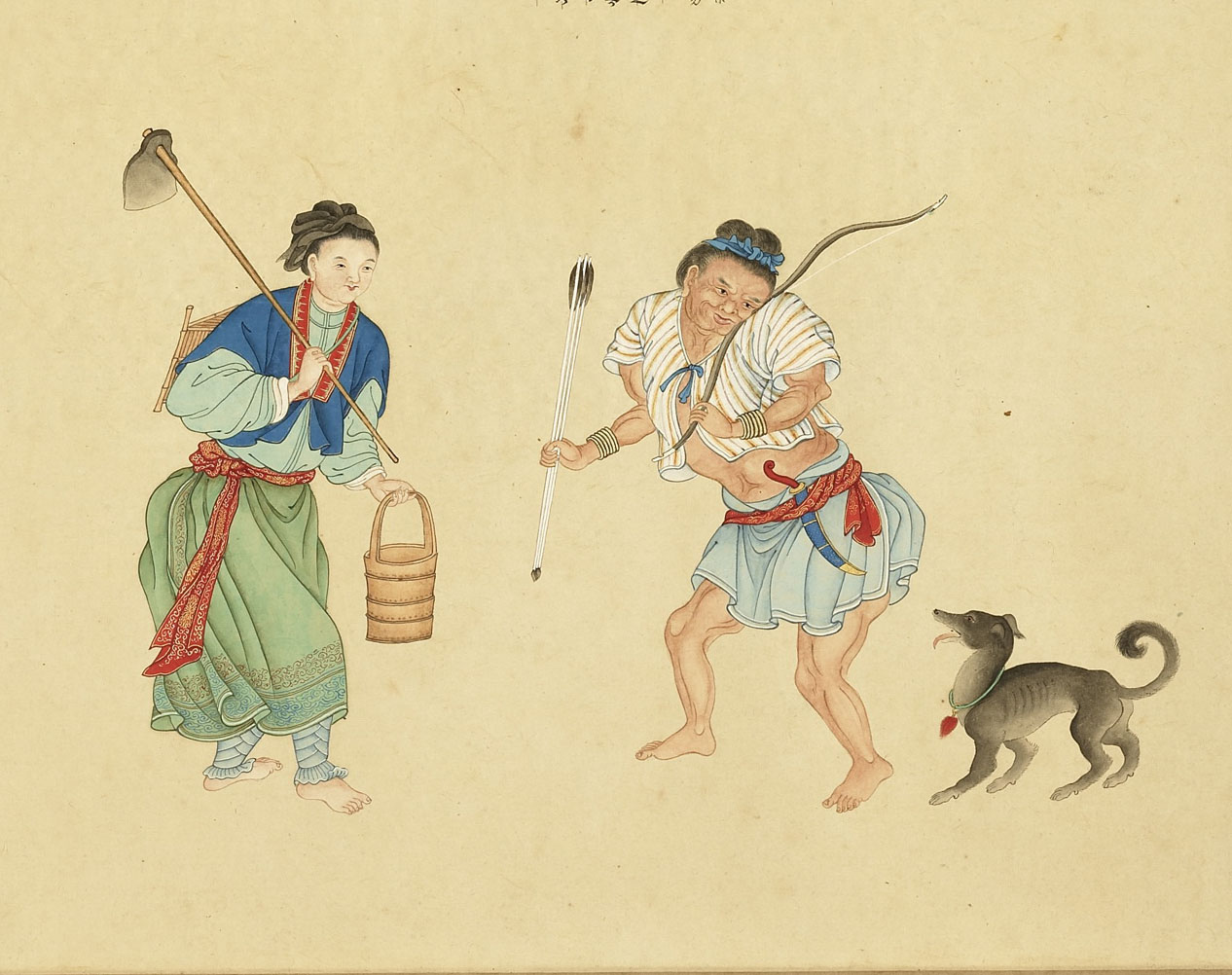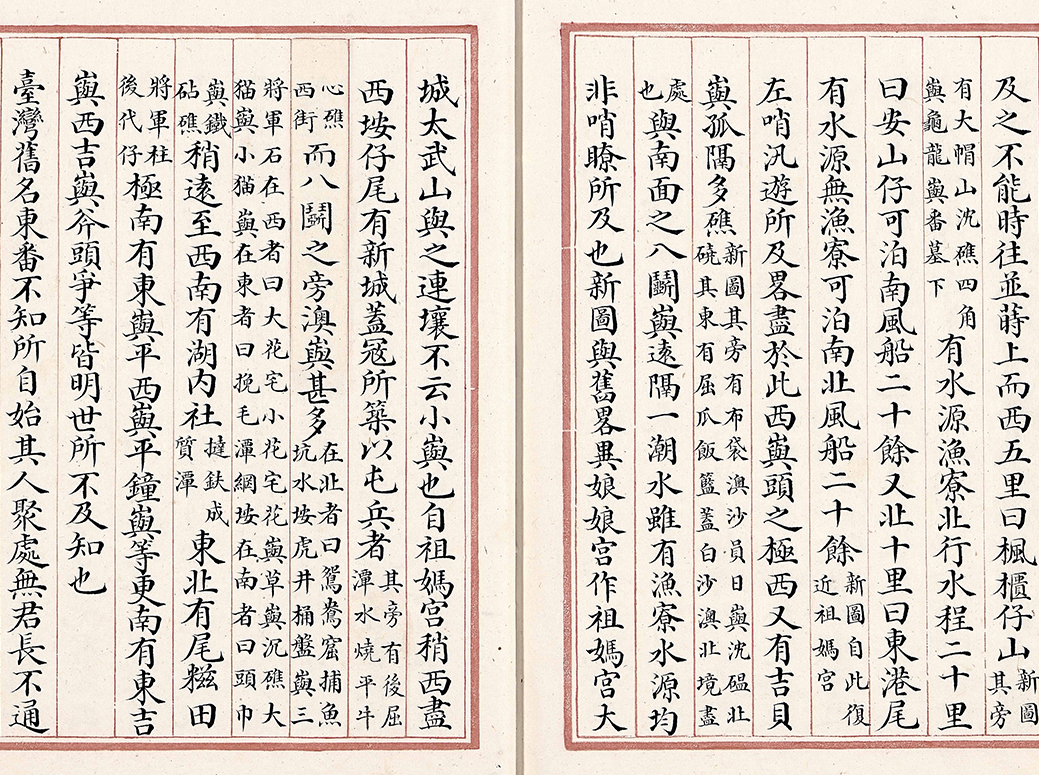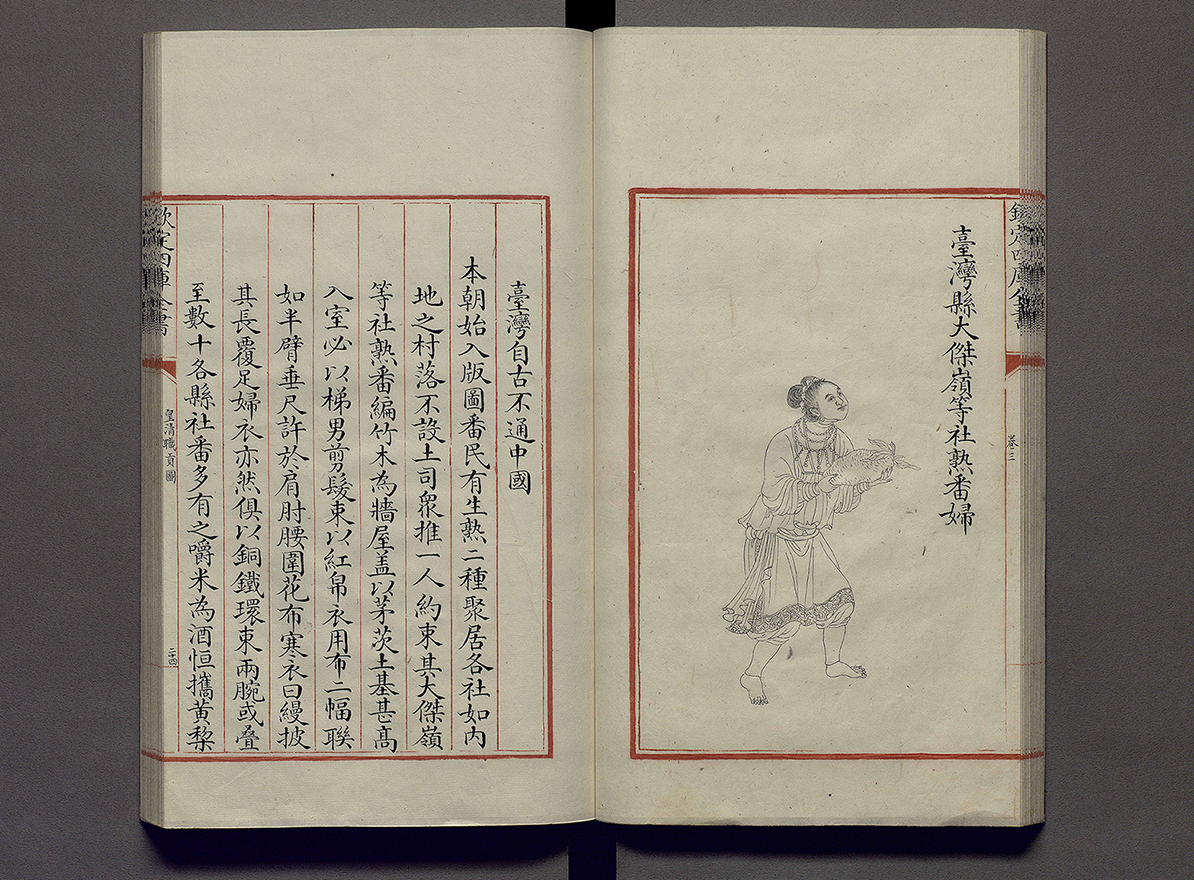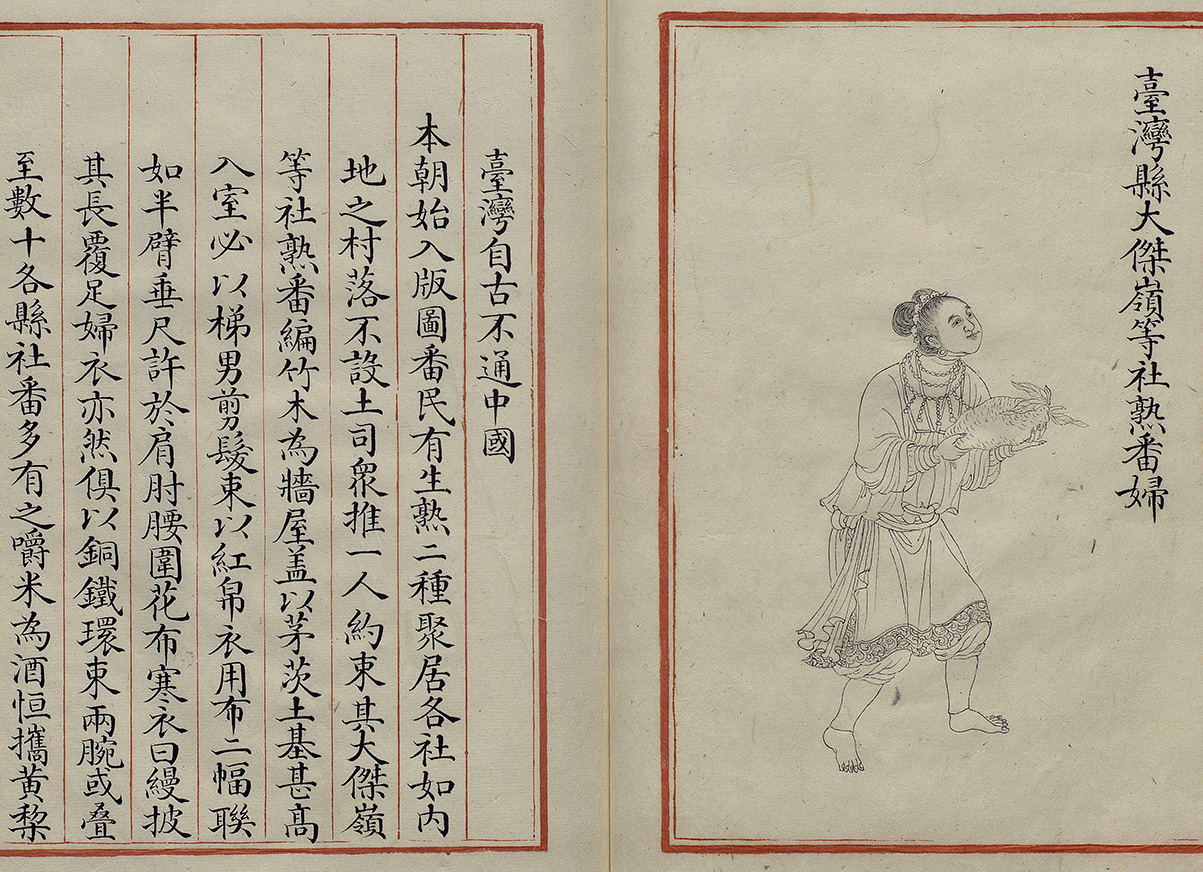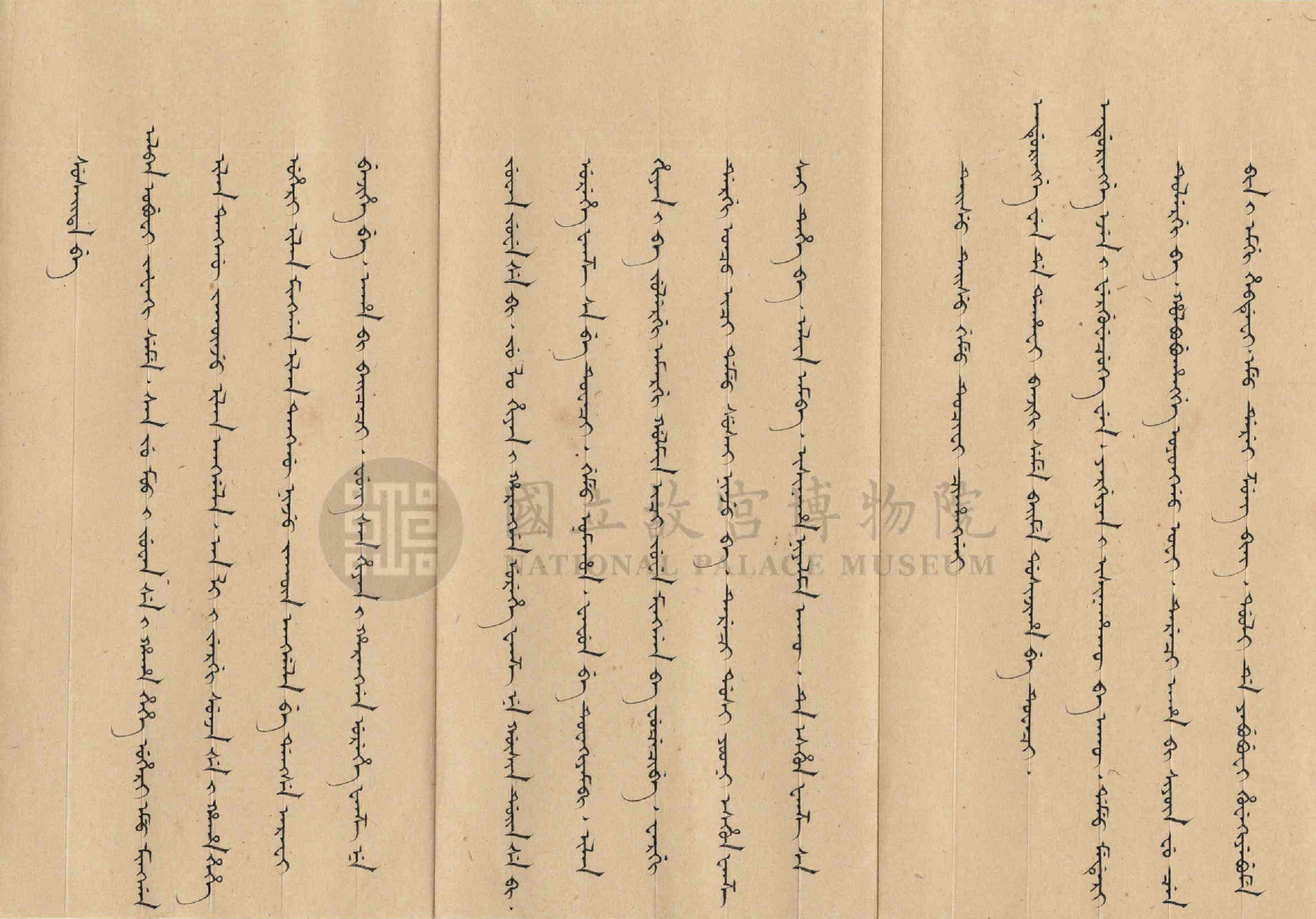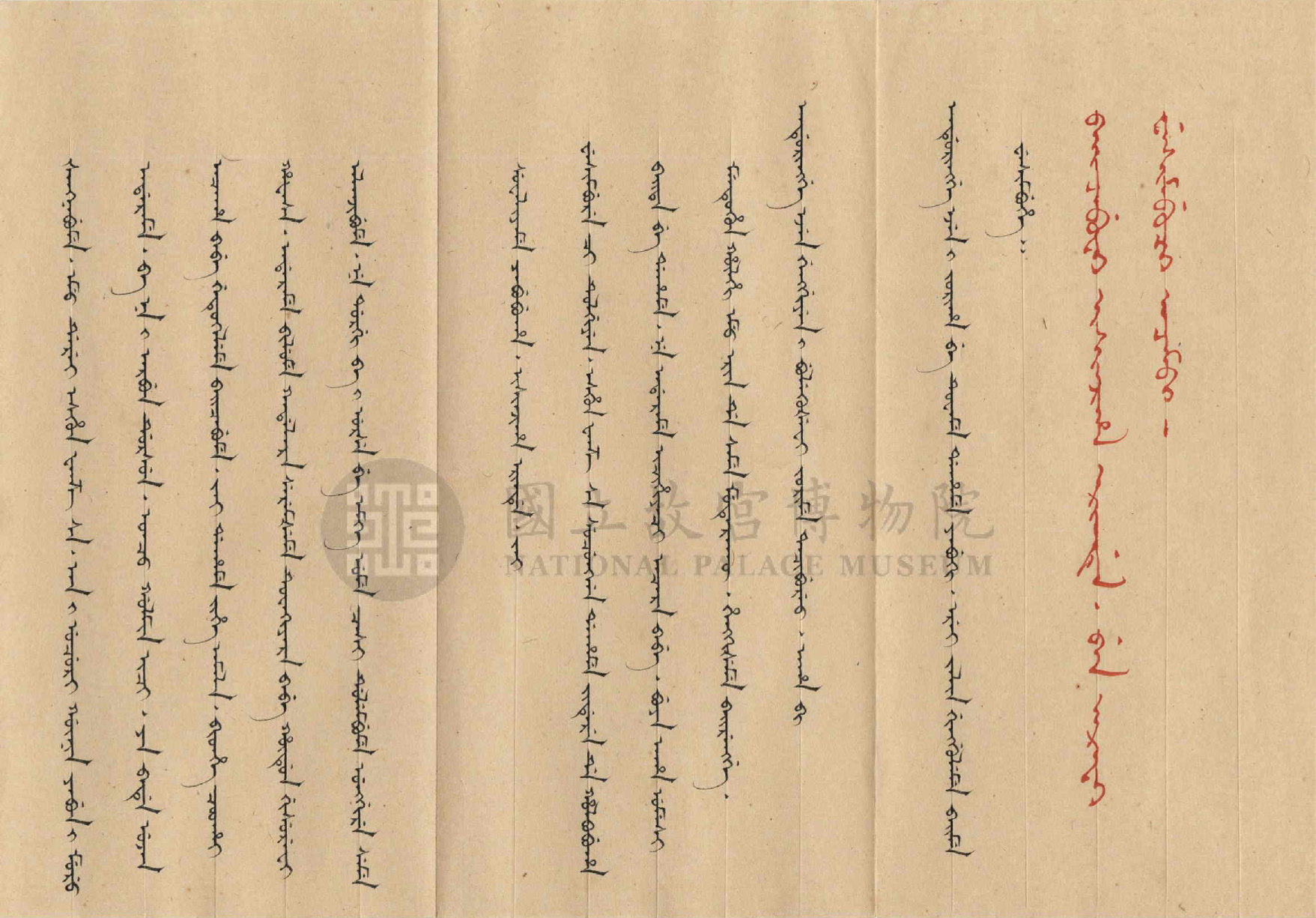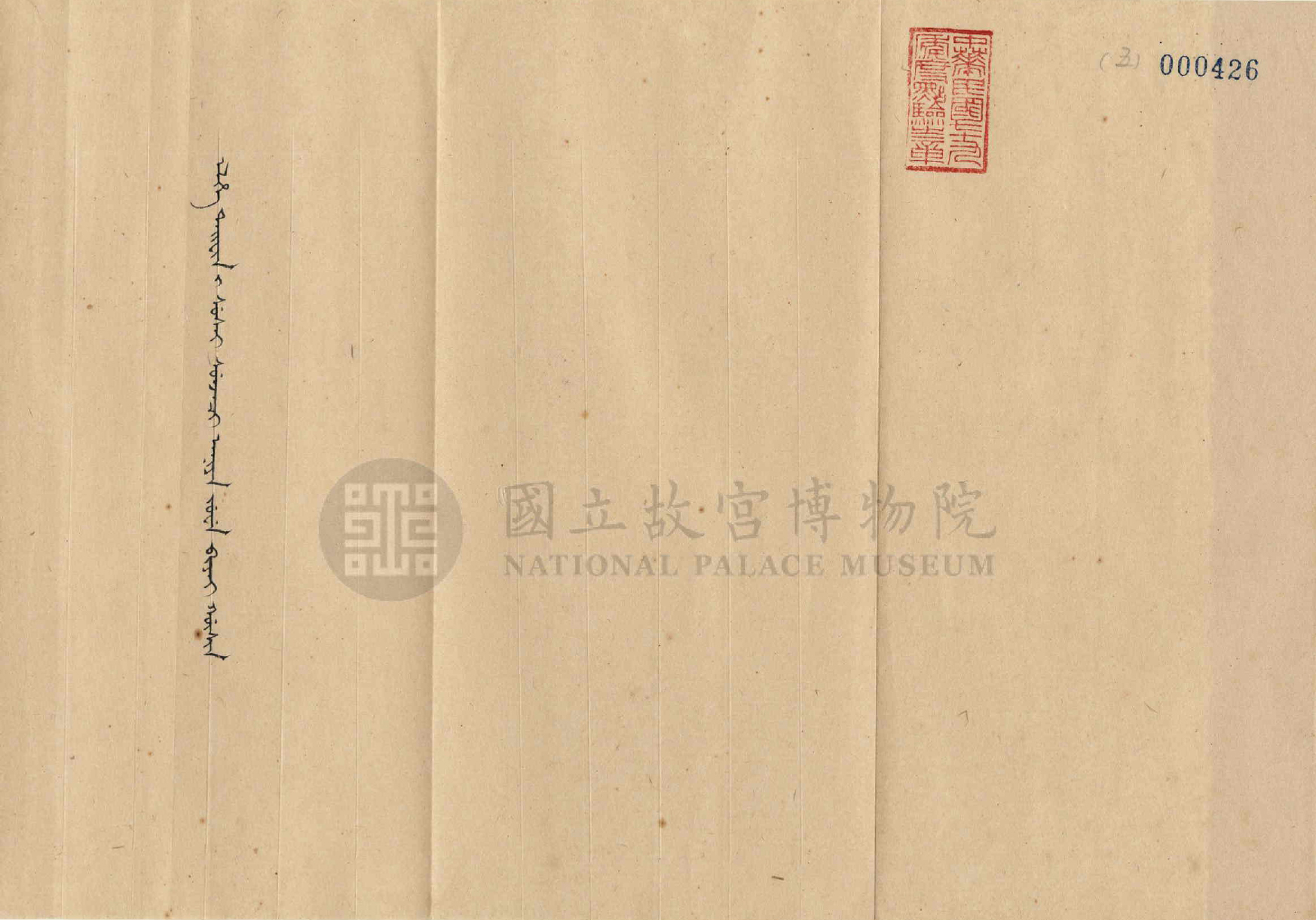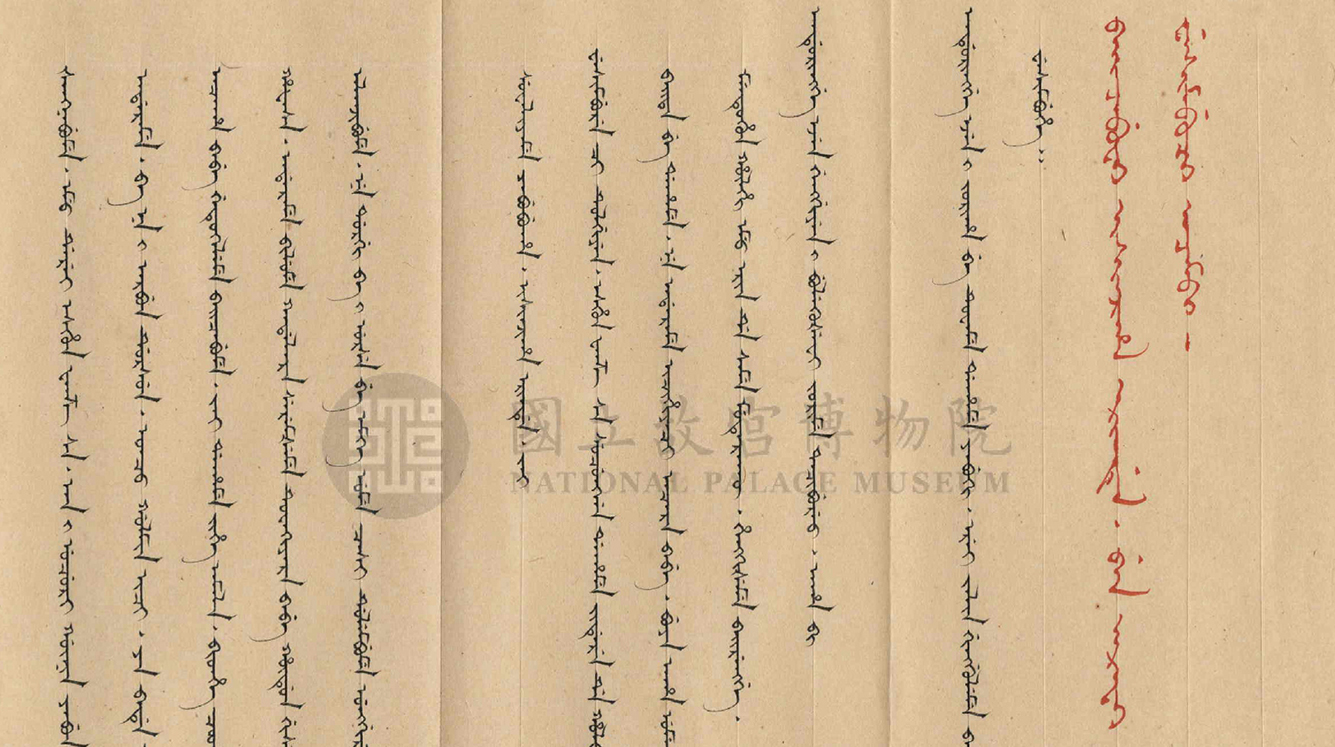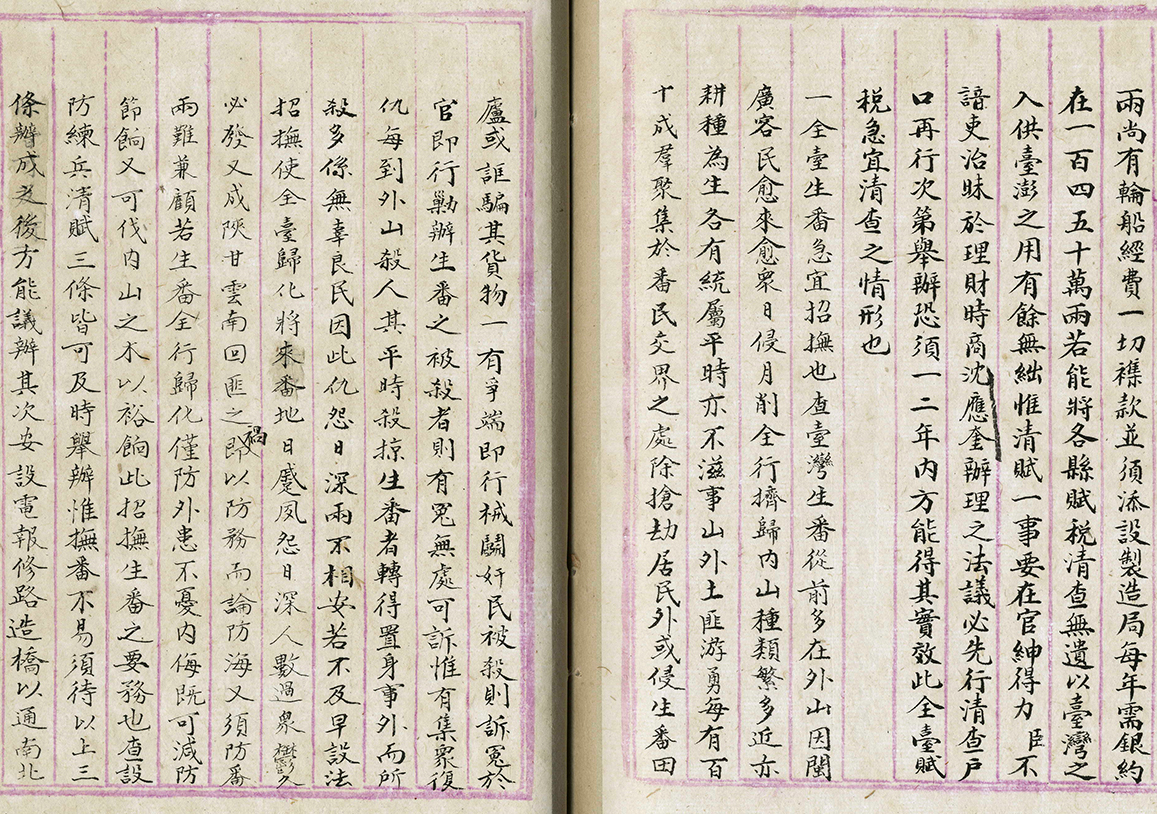Status and Ethnicity
The indigenous peoples of Taiwan were not the only ones to be labeled as "Fan" in the Qing Empire. Ethnic groups in such areas as Gansu, Sichuan, Qinghai, and Tibet were also called as such.
After Taiwan became a part of its dominion in the Kangxi reign (1661-1722), the Qing Empire not only began referring to Taiwanese indigenous peoples as "Fan" but also further divided them into the categories of "Shufan," "Shengfan," and an intermediary one known as "Huafan" to confirm their status and arrange for their governance.
Through the descriptions of "Fansu (Fan customs)" and "Fanshe (Fan villages)" found in local gazetteers and the writings of literati, we can understand the living environment and social activities of indigenous peoples that were observed in different parts of Taiwan at the time.
Zhigongtu Juan
- Illustrations of Tribute Missions
- Xie Sui
- Qianlong reign (1736-1795), Qing dynasty
- Colour on paper
The expansive collection, "Foreign Envoys Bearing Tribute," produced by the Qing court painter Hsieh Sui, contains four scrolls of paintings that captured the officials, chieftains, people, men, women, and children of tributary states and minority groups in the Qing empire.
With the text description, the author used I, fan, yao, miao, liang, and lo lo to describe the Manchu, Mongol, and other ethnic groups within the empire. Although the colorful and life-like paintings tried to express the characteristics of each tribe, on a certain level, their looks and features are often repeated and similar. This does not entirely match the corresponding text, and shows a certain schism.
Yuemin Xunshi Jilue
- A Brief Report on the Inspection Tour of Guangdong and Fujian
- Compiled by Du Zhen
- Manuscript copy from the Siku Quanshu (Wenyuange edition)
- Qianlong reign (1736-1795), Qing dynasty
In 1683, Taiwan was included as part of the Qing empire, the coastal people in Fujian and Guangdong gradually returned to work. Emperor Kangxi (1654 - 1722; reigned from 1661 - 1722) ordered the head of the Construction Bureau, Tu Chen ([1633] - 1703) and cabinet member/scholar Hsi Chu to conduct an inspection. After completing the task, Tu Chen and others produced the Inspection Records of Guangdong and Fujian to provide a summary of their inspection. Although they could not personally experience Taiwan, they still wrote about Taiwan according to their visit experience. Their experiences were recorded in the Records of Eastern Barbarians produced by the Minnan and Guangdong scribe, Chen Ti.
The term "eastern barbarians" (dong fandz) was used in Qing dynasty documents to refer to Taiwan (the region) or the indigenous tribes of Taiwan (people). This term began to be widely used during the late 16th century. Dong (east) refers to a relative direction while fandz refers to tribes that live outside the city. Chen Ti arrived in January 1603 with the army. After observing the territory and the customs of indigenous tribes, he produced the work Records of Eastern Barbarians. This is the earliest field records of Taiwan based on personal visits that can be found in today's Chinese classics. Although the content recorded in the Inspection Records of Guangdong and Fujian was slightly different than the original, it can still render the lifestyle of Taiwan indigenous peoples from over 400 years ago.
Huangqing Zhigongtu
- Illustrations of Tribute Missions to the Imperial Qing
- Compiled on imperial decree by Fuheng (1721-1770)
- Manuscript copy from the Siku Quanshu Huiyao
- Qianlong reign (1736-1795), Qing dynasty
To record the various tributaries and minority tribes of the Qing empire, a large-scale editing project was begun in 1751 under the directive of the emperor. The template was to be issued and the project compiled by the Military Bureau at the core of the central government's authority. The bureaucratic system of various regions was mobilized. The production of this project went from the core to the periphery, and ethnographic imageries were arranged according to geographical location. Thousands of images were produced during the process and the "Foreign Envoys Bearing Tribute" (by Qing dynasty Hsieh Sui), Excerpts of the Complete Library of the Four Treasuries from the Chizao Hall, Complete Library of the Four Treasuries from the Wenyuan Hall, and "Foreign Envoys Bearing Tribute to Imperial Qing" (released by the Wuying Hall) were some of the results.
Taiwan's indigenous tribes were divided into 13 different tribes in the "Foreign Envoys Bearing Tribute to Imperial Qing," but this is different than the current legal classification of 16 tribes. The tribal names in the "Foreign Envoys Bearing Tribute to Imperial Qing," were named based on the lowland tribes and highland tribes, the area name, and the terms "domesticated barbarians," "naturalizing barbarians," or "interior mountain barbarians."
Palace memorial seeking instruction regarding the naturalization of unsubjugated non-Han tribes in the mountainous interior of Zhuluo and other counties of Taiwan
- Presented by Gioroi Mamboo, Governor-General of Fujian and Zhejiang
- 30th day of the 2nd month of the 55th year of the Kangxi reign (1716), Qing dynasty
The Qing dynasty officials originally used the terms eastern barbarians, wild barbarians, or local barbarians to describe the indigenous peoples in Taiwan without a set official term. As they came in more contact with the local tribes, they began to use the term "undomesticated barbarians," which was used to describe other "wild" minority tribes in the empire, to describe the tribes that have not been "naturalized."
As more "undomesticated barbarian" tribes became naturalized, the term "domesticated barbarians" appeared for the purpose of differentiation. This term first appeared in 1716, in the "Request for Instructions on the Naturalization of Taiwan Fengshan and Zhulou County's Interior Mountain Barbarians" issued by the Fujian and Zhejiang governor, Chiao Lo Man Pao. The document states that "Fengshan County has 12 domesticated barbarian tribes, and Zhulou County has 34 domesticated barbarian tribes."
Other than being overseen by officials, "domesticated barbarians" must also pay taxes (tax, land lease), free labor, and help in times of war.
Copy of a palace memorial on the reform of Taiwan and Penghu
- Presented by Liu Mingchuan (1836-1896), Governor of Taiwan
- 18th day of the 6th month of the 11th year of the Guangxu reign (Feb 15, 1885), Qing dynasty
- From the Grand Council's Monthly Memorial Dossiers, vol.1 for the 7th month of the 11th year of the Guangxu reign (Feb, 1885), Qing dynasty
In 1766, the Qing empire set up the northern and southern "barbarian management official" to be responsible for matters related to "domesticated barbarians." The officials did not take more active action towards the management of the "undomesticated barbarians" areas until 1875, when restrictions on entering undomesticated barbarian lands were lifted, and "pioneering and barbarian pacification began." The so-called pioneering and barbarian pacification is the use of the military by the Qing empire to force interior indigenous tribes to "naturalized" and to strength the country's authority over the tribes.
The term "barbarian pacification" may look to be just pacifying undomesticated barbarians, but on a deeper level, is also a plan to obtain the resources of the mountain areas. To stabilize the situation in the mountains, various methods were used to accelerate the assimilation of the tribes to facilitate follow-up development of the mountains and forests. However, there is limited effect to military suppression, and Governor Liu Ming-Chuan's (1836-1896) report also admitted the difficult challenges involved.


